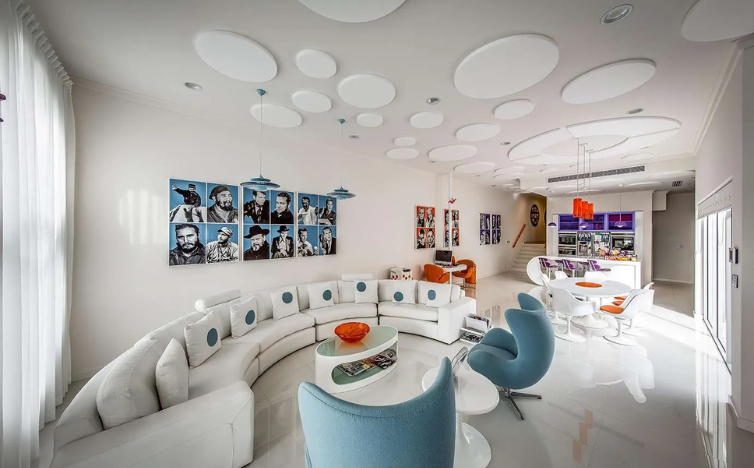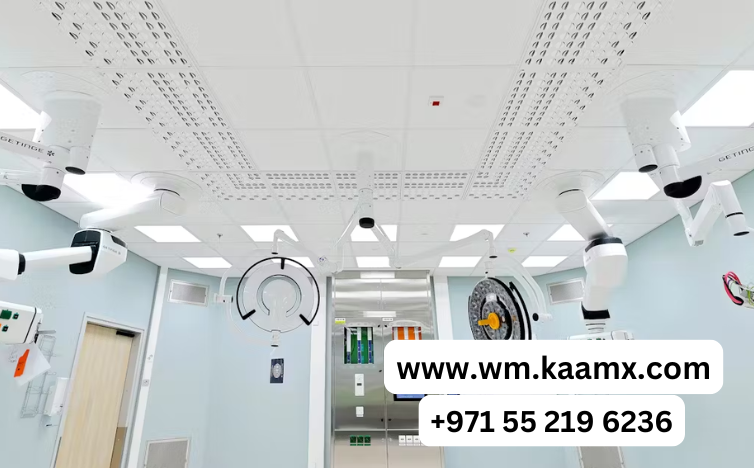Healthcare facilities are bustling environments where noise can disrupt patient comfort, staff productivity, and overall efficiency. Effective acoustic treatments in healthcare can minimize these disruptions, creating a quieter, more focused, and comfortable space for patients and medical professionals alike.
Challenges of Noise in Healthcare Settings
Healthcare facilities are prone to high noise levels due to equipment, staff communication, and patient activity. Excessive noise can:
- Increase stress and fatigue for staff.
- Delay patient recovery by interfering with rest.
- Compromise patient privacy and confidentiality.
Addressing these issues requires a strategic approach to sound management.
Key Areas for Acoustic Treatment in Healthcare
 1. Patient Rooms
1. Patient Rooms
Soundproofing in patient rooms ensures a peaceful environment that promotes rest and recovery. Acoustic wall panels, soundproof doors, and insulated windows can significantly reduce external and internal noise.
2. Nurses’ Stations and Offices
These are critical zones where focus is essential. Installing sound-absorbing ceiling tiles and panels can help control noise levels, ensuring better communication and concentration for healthcare staff.
3. Waiting Areas
Busy waiting rooms can become overwhelming for patients and visitors. Acoustic baffles and sound-absorbing furniture help create a calmer environment, improving the overall experience.
4. Operating Rooms and Labs
Operating rooms and labs require precision and focus. Acoustic flooring and soundproof barriers can help reduce distractions, ensuring optimal performance during critical procedures.
5. Corridors and Hallways
Corridors are high-traffic areas with constant movement and chatter. Installing acoustic wall panels can minimize echo and maintain a quieter atmosphere throughout the facility.
See Also: The Importance of Soundproofing in Healthcare Facilities
Effective Acoustic Solutions for Healthcare Facilities
1. Acoustic Panels and Baffles
These sound-absorbing materials are versatile and effective for reducing noise in various spaces. They come in different styles and finishes to match the facility’s design.
2. Acoustic Ceiling Tiles
Ideal for larger spaces, these tiles reduce overhead noise and echo, contributing to a more peaceful environment.
3. Soundproof Windows and Doors
These upgrades block external noise and maintain internal privacy, crucial for patient rooms and consultation areas.
4. Mass Loaded Vinyl (MLV)
MLV barriers can be installed in walls, ceilings, and floors to block noise transmission between rooms.
5. Carpet and Flooring Solutions
Using sound-absorbing materials like carpets or acoustic flooring minimizes noise caused by footsteps and movement.
Benefits of Acoustic Treatments in Healthcare
- Enhanced Patient Recovery: Quieter environments help patients heal faster by reducing stress and enabling better rest.
- Improved Staff Productivity: Reduced noise distractions enable staff to focus on their tasks, improving efficiency and decision-making.
- Increased Privacy: Acoustic treatments maintain confidentiality during patient-doctor conversations.
- Better Overall Experience: Visitors and patients experience reduced anxiety in a calmer, more organized setting.
Contact Muhammad Shaheen Carpentry at 971 55 219 6236, and discover the transformative science of soundproofing for your space.
Conclusion
Incorporating acoustic treatments in healthcare facilities is no longer a luxury—it’s a necessity. From patient comfort to staff efficiency, sound management plays a critical role in improving healthcare outcomes. Investing in soundproofing solutions ensures a more peaceful, productive, and private environment for everyone involved.

